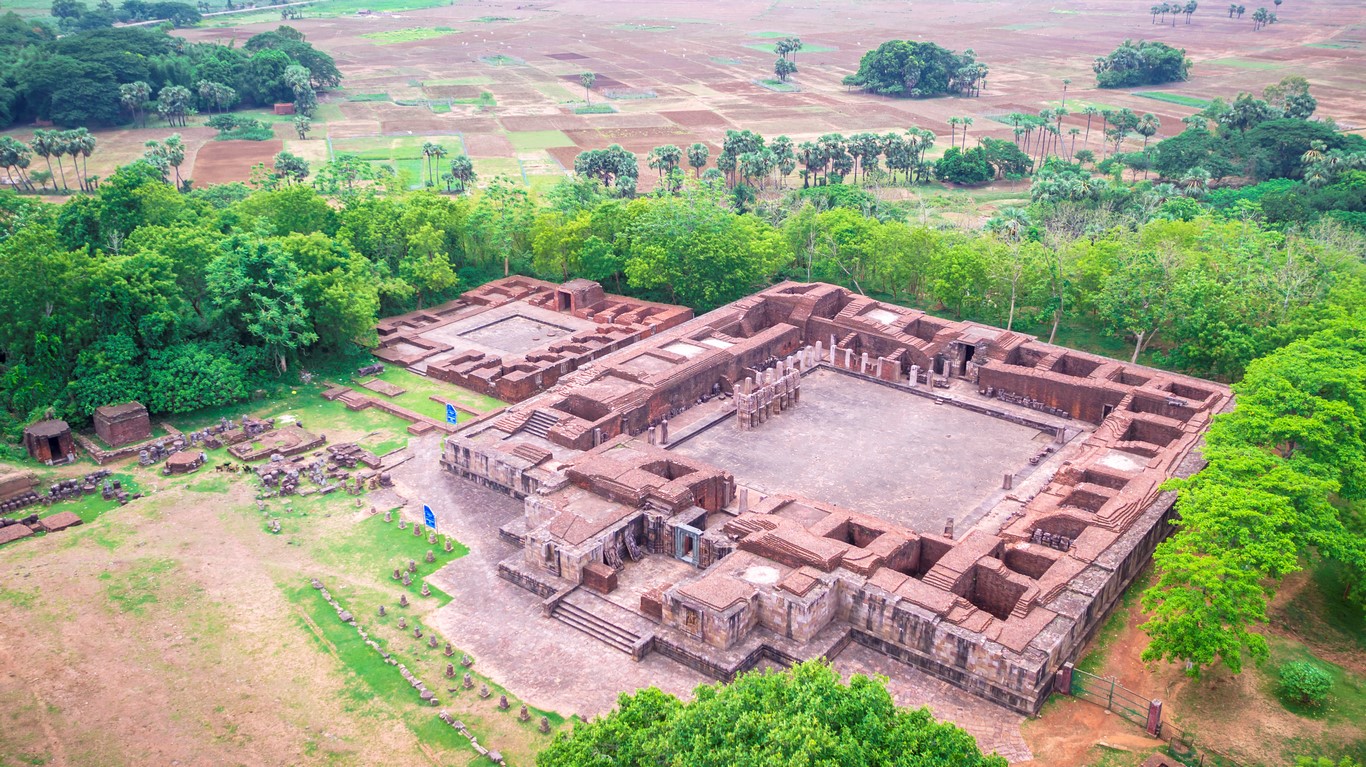
ABOUT THE
Attraction
Located on an isolated hillock in the Asia range of mountains, wedged between Birupa and Brahmani rivers in Jajpur district of Odisha, Ratnagiri is an important Buddhist centre. Three hills, Ratnagiri, Udaygiri and Lalitgiri together constitute what is known as the Diamond Triangle for Buddhism in Odisha. The trio is also said to be part of the Pushpagiri University.
Ratnagiri (literally meaning jewel hill) is considered as one of the best discoveries among Buddhist monuments and sculptures in India. The findings include three monasteries, eight temples and a number of votive stupas believed to be dating from the 7th century AD. The largest monastery is 55 sqm in size with a surrounding veranda with 60 pillars built around a courtyard. Its historical name is said to be Simhaprastha Mahavihara. Study of these excavations point to the fact that the Buddhist centre here was established during the time of the Gupta king Narasimha Gupta Baladitya (6th century AD). Studies prove Buddhism flourished here till the 12th century AD. Initially, this site was an important centre of Mahayana form of Buddhism and during 8th and 9th century AD. Tantric Buddhism also flourished here. Tibetan scriptures indicate that Ratnagiri played a significant role in the emergence of Kalachakra tantra during 10th century AD. This is evident from numerous votive stupas with images of divinities from Vajrayana pantheon, independent images of these divinities, inscribed stone slabs and terracotta plaques discovered here. A beautifully carved stone door-jamb at the entrance of the brick monastery and a massive idol of Buddha are among the most stunning excavations made here. There is also a smaller monastery at the site along with a stone temple and several brick shrines.
Odisha has a long association with Buddhism. According to Buddhist texts, a strand of Buddha's hair was brought to this region after his mahaparinirvana. In the years to come, Buddha’s nail and tooth relics also found a home here. Hiuen Tsang, the Chinese Buddhist traveller and monk, visited Odisha in the 7th century, and his writings are testament to the fact that Buddhist tradition has been thriving in this region since then.
The nearest major town is Cuttack 70 km away
OTHER ATTRACTIONS

Dhauligiri
Dhauligiri holds a very important place in the spread of Buddhism. It is said that the plains adjacent to the Dauli hill is where the Kalinga war was fought in 262 BC, after which, Mauryan emperor Ashoka, one of the most prominent followers of Buddhism, renounced violence and took to Lord Buddha's path.
Lalitgiri
With a Buddhist complex dating back to the 1st century AD, Lalitgiri is said to be one of the oldest Buddhism sites excavated in India.


Langudi
The Buddhist ruins here indicate that this place was a significant centre of the Hinayana, Mahayana and Vajrayana sects of Buddhism.